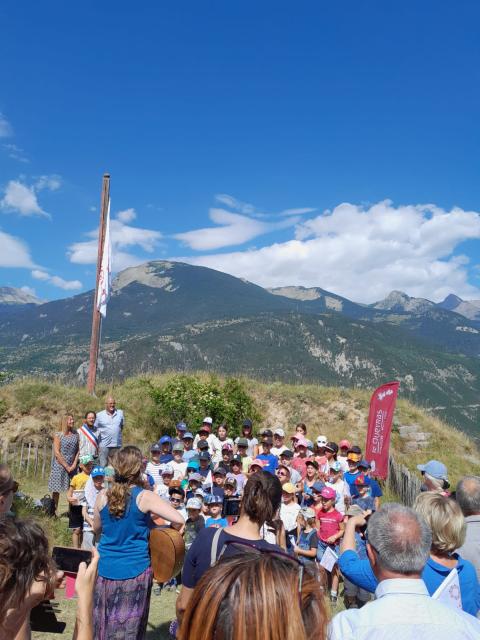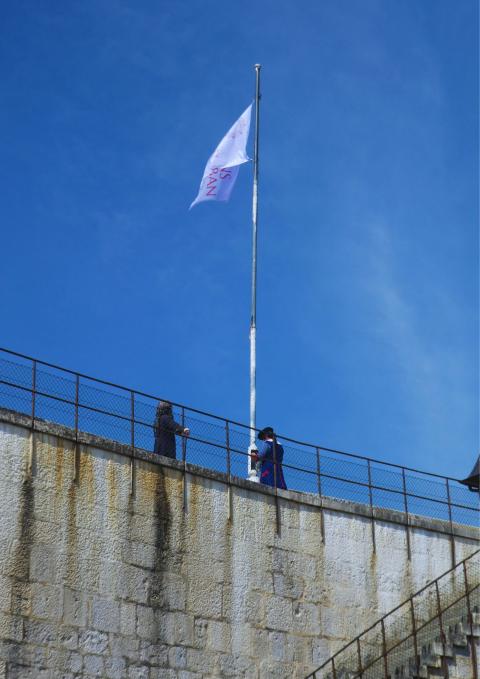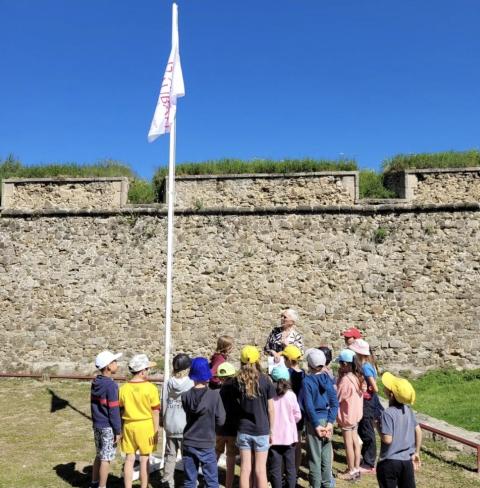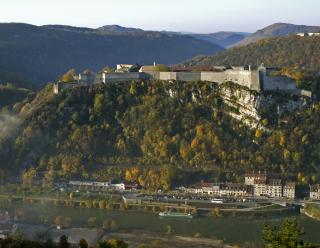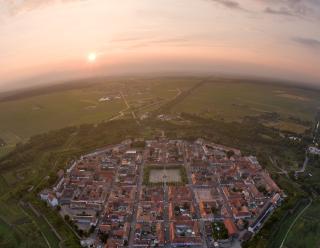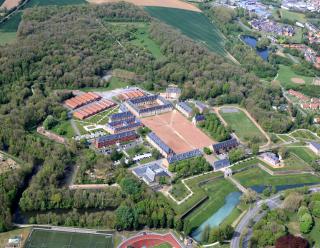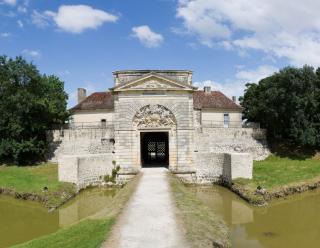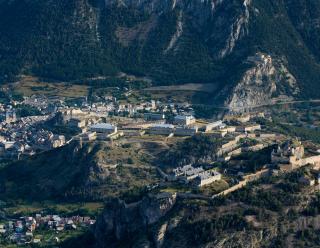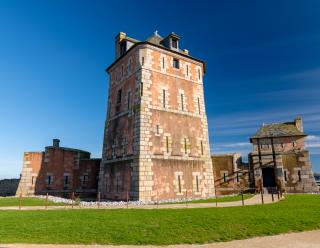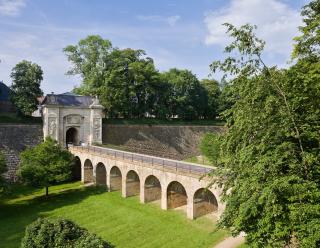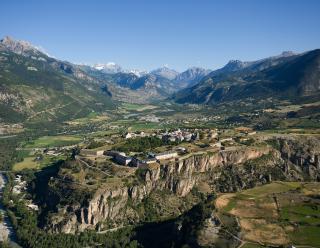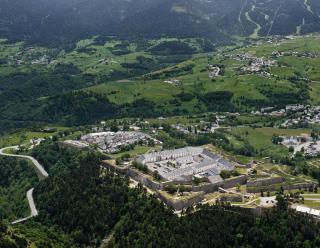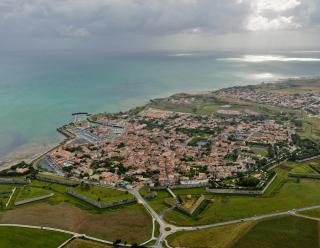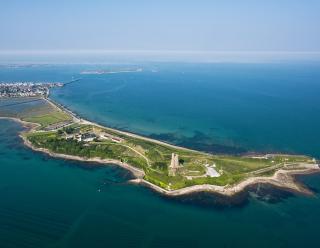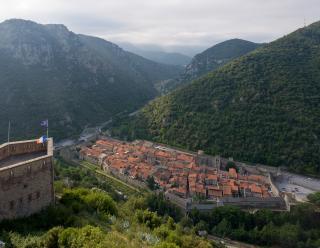On July 7th 2023, 15 years to the day after the Fortifications of Vauban were inscribed on UNESCO's World Heritage List, the twelve major Vauban sites proudly celebrated this anniversary in ceremonies marked by the flags being raised at all sites at 11am.
Flags displaying the "15 ans Vauban" emblem are now flying in all twelve corners of France, symbolizing the pride of belonging to the Fortifications of Vauban as a World Heritage site, and a sign of their shared commitment to preserving and promoting this exceptional heritage.
Inscription on UNESCO's World Heritage List is indeed an international recognition of the universal and exceptional value of natural and cultural properties, whose importance is such that their disappearance would mean a loss for the whole of humanity. It also represents a long-term commitment towards the international community and future generations to preserve and promote the listed property.
To celebrate the 15-year anniversary of the Fortifications of Vauban's inscription on UNESCO's World Heritage List, and to further promote Vauban's major sites and their Outstanding Universal Value, a number of other festive and cultural activities are being organized throughout the year by the twelve major sites: historical shows, cultural events, exhibitions, fireworks, festive gatherings...
Find the full program on our dedicated page.
Besançon (Doubs)
Vauban adapted with genius to the land
Besançon lies in an exceptional strategic position, which Julius Caesar had already noticed: the River Doubs encloses the city in a loop closed off by a hill.
Neuf-Brisach (Haut-Rhin)
A remarkable town built from scratch
A perfect star on the Alsace plain, Neuf-Brisach can be seen as the culmination of all of Vauban’s fortified work.
Arras (Pas-de-Calais)
In Vauban’s "Pré Carré"
In 1659, the town of Arrras came under the authority of the King of France for good and was incorporated into Vauban’s "pré carré", a double line of fortified towns built to protect the north-eastern border of the kingdom.
Blaye/Cussac-Fort-Médoc (Gironde)
The barricade of the estuary
The barricade of the estuary is an imposing triptych guarding the River Gironde and was built by Vauban and his engineer, Ferry, between 1685 and 1692.
Briançon (Hautes-Alpes)
A masterpiece of mountain fortifications
Perched on a rocky spur, 1326 metres high, the town of Briançon is in a strategic position where five valleys meet, and stands out as a unique site.
Camaret-sur-Mer (Finistère)
The gilded tower guards the Armorique coasts
The Camaret tower is located at the end of a sandbank, in the heart of what is today the Iroise Marine Park and the Armorique National Regional Park. It was built from 1693 to 1696 to prevent the enemy from capturing the port of Brest and its fleet from the rear.
Longwy (Meurthe-et-Moselle)
A new town on the plain
When Longwy-Haut became French under the 1679 Nimeque Treaty, Louis XIV decided to destroy the old medieval town and replace it with a «new town» to form a major defensive link on the north-eastern border.
Mont-Dauphin (Hautes-Alpes)
The archetypal mountain stronghold
In 1693, Vauban decided to build a stronghold from scratch to prevent attacks from Italy. This remarkable construction was set on a bleak plateau, at a height of 1050 metres, dominating the confluence of the Rivers Guil and Durance.
Mont-Louis (Pyrénées-Orientales)
A mountain citadel ready for use
Located in the eastern Pyrenees at an altitude of 1600 metres, the stronghold of Mont-Louis was built from scratch by Vauban on granite terrain and is perfectly adapted to the geography of the site.
Saint-Martin-de-Ré (Charente-Maritime)
A stone star between land and sea
In 1681, Vauban planned to build a central reduit at Saint-Martin, which could shelter the whole population of the island if the enemy landed at an other point.
Saint-Vaast-la-Hougue (Manche)
Coastal observation towers
During each of his visits, Vauban described the harbour of Saint-Vaast as the "best and most secure in the kingdom" with natural protection from the Isle of Tatihou.
Villefranche-de-Conflent (Pyrénées-Orientales)
A functional masterpiece
Located at the hollow of the deep Têt valley, the "petite villotte" (small town) was dominated on all sides. The medieval walls which stretch along the river were altered by Vauban in 1679.


